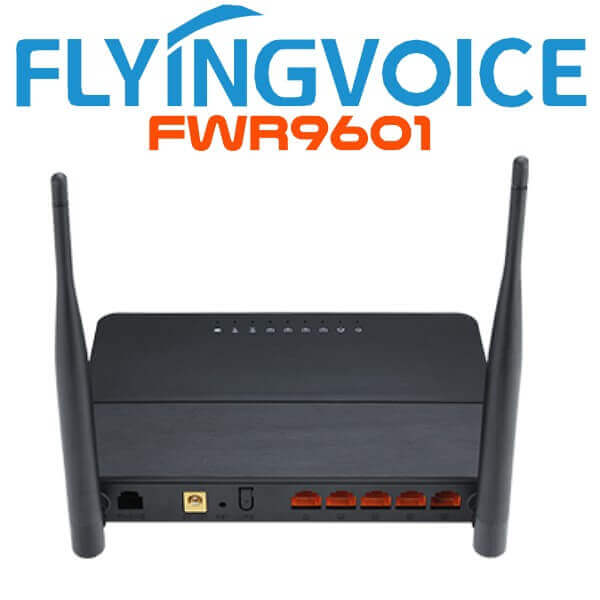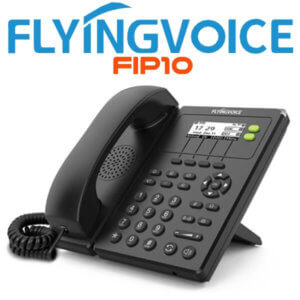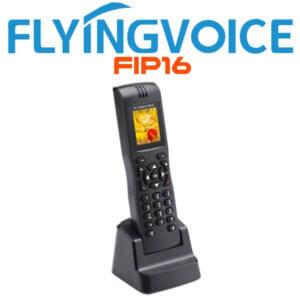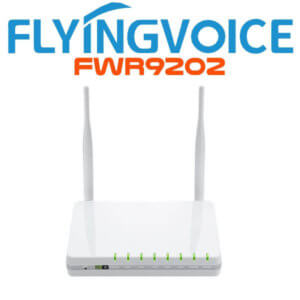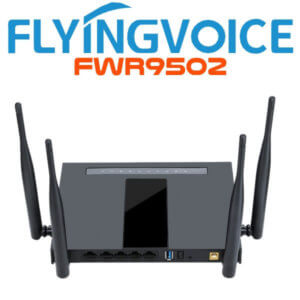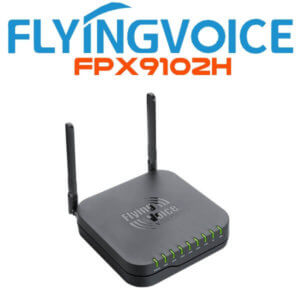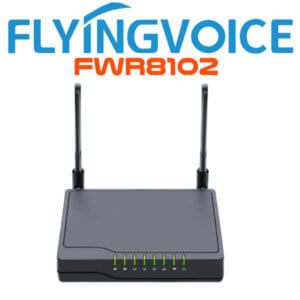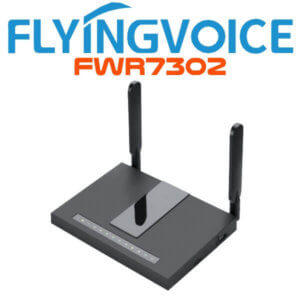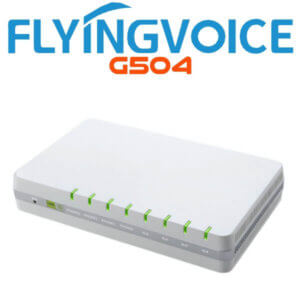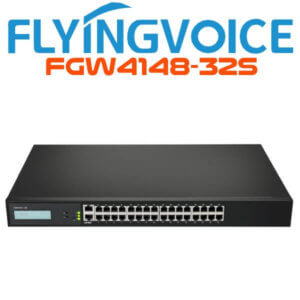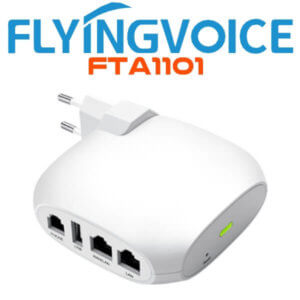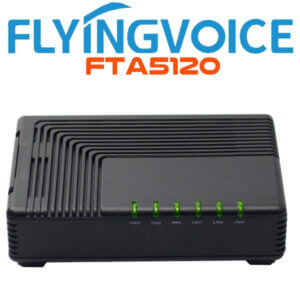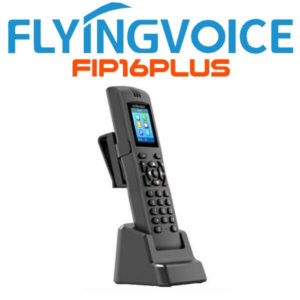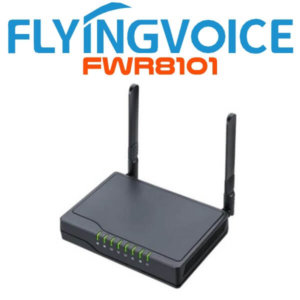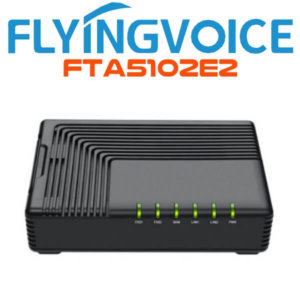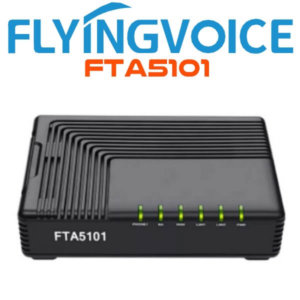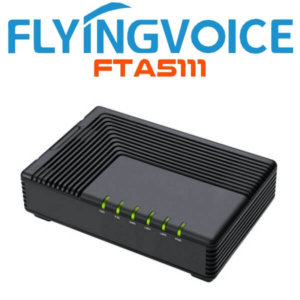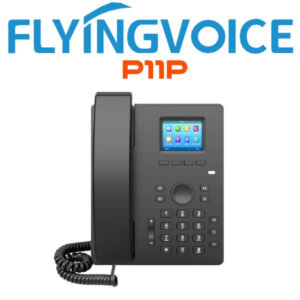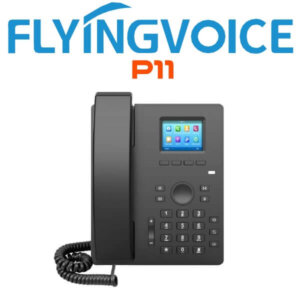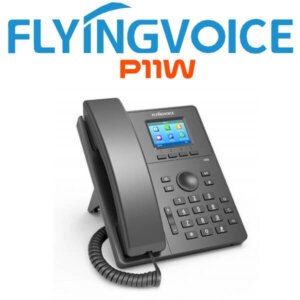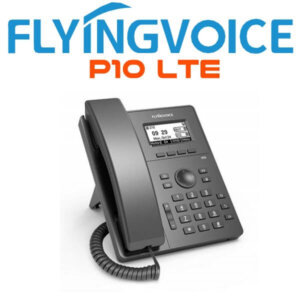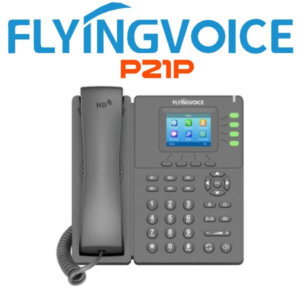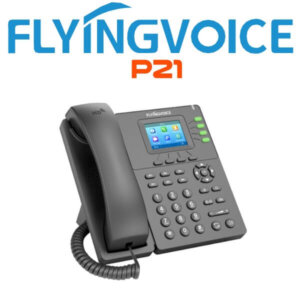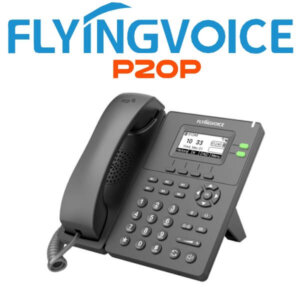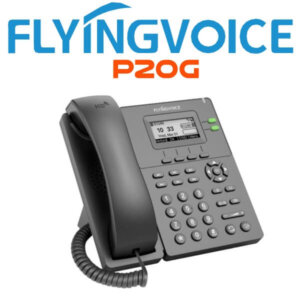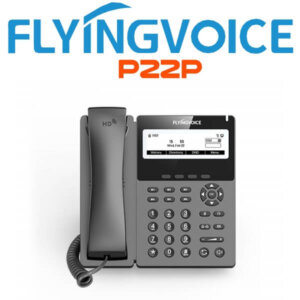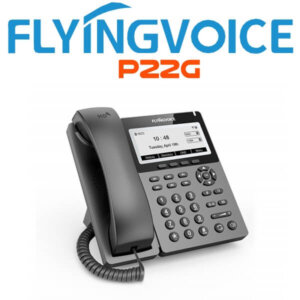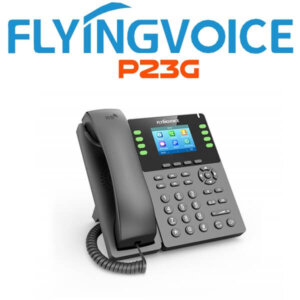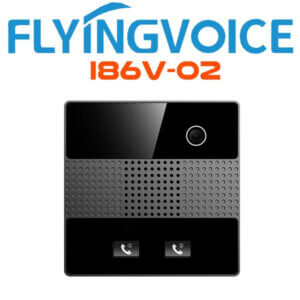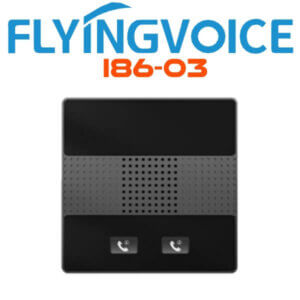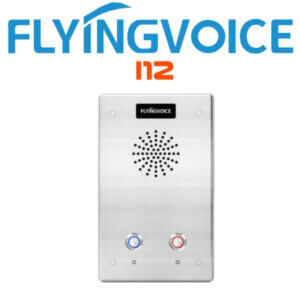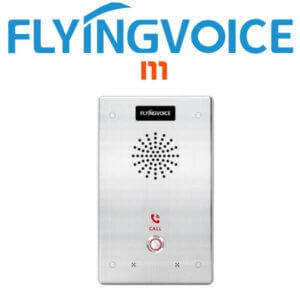Description
FWR9601 VoIP Router integrates internet sharing for daily application, making it the best choice for any VoIP communication. It not only provides for high quality voice communications, also offers Access Point (AP) function to meet your daily wireless communication needs. FWR9601 VoIP Router is SIP v2.0 – based, enabling you to make calls via Proxy voice communications, IP sharing, as well as the QoS mechanism. It meets the 802.11n wireless standards and is fully compatible with most internet service providers.
The magnificent Flyingvoice FWR9601 has 1 FXS telephone port and 5 10/100Mbps Ethernet ports which are greatly convenient when deploying VoIP networks. You can use your FWR9601 VoIP Router as an FTP server to share LAN files, pictures and other media, making it ideally suitable for small and medium enterprises.
Flyingvoice FWR9601 Dual-Band VoIP Router Features:
- 1 FXS (Foreign Exchange Subscribers) Port :
- Foreign Exchange Subscribers is the port that actually delivers the analog line to the subscriber. it is simply the “plug in the wall” that delivers a dial tone, battery current and ring voltage. This is the jack or interface to the phone system which FXO devices can be connected to. The Flyingvoice FWR9601 Wireless VoIP Router has been equipped with 1 FXS port to maximize communication while using your telephone to make calls, thus maximizing work productivity.
- Firmware Upgradeable :
- You can easily update the operating system on your Flyingvoice FWR9601 VoIP Wireless Router so as to improve its functionality and enhance user experience. Upgrading firmware also fixes any existing bugs and protects you from any kind of software malfunctions and vulnerabilities.
- To update your router’s firmware, simply type your router’s IP address into your web browser and enter your login information. Then locate the Firmware or Update section and download the latest firmware update on your router manufacturer’s website. Finally, upload the update and reboot the router.
- Voice Clarity :
- The Flyingvoice FWR9601 VoIP Wireless Router offers users distraction-free communication courtesy of the inbuilt industry-leading Acoustic Echo Cancelling Technology, Adaptive Jitter Buffer, Voice Activity Detection, and Comfort Noise Generation that deliver superior High Definition sound quality devoid of extraneous noises. This makes it possible to enjoy fluent phone conversations.
- SIP Compliance :
- The Server-Initiated Application (SIP) is incorporated for users to plug and play the phone without the need for configurations. Once the phone is connected to the network and powered on, initialization commences automatically, after which the phone is up and ready for use. Furthermore, the Flyingvoice FWR9601 VoIP Wireless router can not only be configured via a user interface, it also accepts SIP NOTIFY messages from SIP proxy servers, which gives it an ability to act as a web server. You can therefore easily connect your FlyingVoice FWR9601 VoIP Wireless Router to your IP PBX System or direct to a VoIP service provider in order to enjoy seamless conference calls. The Flyingvoice FWR9601 VoIP Wireless router is based on SIP v2 (RFC 3261, 3262, 3263, 3264) and works perfectly with most of the SIP platforms such as Asterisk,3CX, and BroadSoft that currently exist in the market.
- Automated Provisioning :
- The technologically advanced Flyingvoice FWR9601 VoIP Wireless Router has the ability to deploy information technology or telecommunications service by using embedded pre-defined procedures that are carried out electronically without requiring any human intervention, thus making it very reliable and convenient.
- Technical Report (TR – 069) :
- This is a technical specification of the Broadband Forum that defines an application layer protocol for remote management of customer-premises equipment (CPE) connected to an Internet Protocol (IP) network. The TR-069 embedded in the Flyingvoice FWR9601 VoIP Router uses the CPE WAN Management Protocol (CWMP) to provide support for functions such as auto-configuration, software or firmware image management, software module management, status and performance managements, and diagnostics. The CPE WAN Management Protocol is a bidirectional SOAP – and HTTP-based protocol, and provides the communication between a CPE and auto configuration servers (ACS). The protocol addresses the growing number of different Internet access devices such as modems, routers , gateways, as well as end-user devices which connect to the Internet, such as set-top boxes , and VoIP devices such as the Flyingvoice FWR9601.
- Rich Layer 2 / 3 QoS Capabilities :
- Quality of Service (QoS) is a feature of routers and switches which prioritizes traffic so that more important traffic can pass first, resulting in an overall performance improvement for critical network traffic. This feature is very useful in the Flyingvoice FWR9601 VoIP Wireless Router whenever there are high volumes of traffic, therefore eliminating any delays while working.
- The Management Platform :
- The Flyingvoice FWR9601 VoIP Wireless Router delivers convenience, reliability and seamless integration through the Flyingvoice Device Management Platform via an installed unified firmware. The platform is also used to troubleshoot and solve some of the common complexities that sometimes come during provisioning, call management, and quality control. It also enhances user experience and adoption, making it easy to consolidate clients under one platform. This not only makes the device easy to deploy and maintain, but also gives you the ability to keep it at par with new and advanced firmware updates, thus a reduction in upgrade, maintenance and operational costs. The Flyingvoice FWR9601 VoIP Wireless Router is, thus, a perfect solution regardless of the variations in your company’s needs.
- Highly Flexible :
- The Flyingvoice FWR9601 VoIP Wireless Router pushes versatility to a new high, thanks to its ability to complement already existing fixtures for enhanced web and audio conferencing, as well as other communication needs. This makes it easy to integrate seamlessly into any office setup without disorienting earlier structures and work ethic. Furthermore, the device is easy to redeploy as the business grows and needs to transform.
- Conference Guide :
- This advanced feature of the Flyingvoice FWR9601 VoIP Wireless Router helps the user to easily set up group calls with a single click of a button. The hi – tech device allows for 3 – way group calls, thus enabling the user to easily join or create meetings.
Flyingvoice FWR9601 Dual-Band VoIP Router Specifications:
Chipset Solution
- MT7621A, MT7612E, MT7603E
Flash
- 16MB Flash
RAM
- 64MB DDR2 RAM
Power
- AC/DC Adapter
- AC Input: 100~240V, 50~60Hz
- DC Output: 12V, 1A
Operating System
- Linux
I/O Interfaces
- 1 RJ-45 for WAN port (Ethernet 1000 Base-T)
- 4 RJ-45 for LAN port (Ethernet 1000Base-T)
- 1x FXS
- Two 5dBi Antenna for IEEE802.11n 2T2R Wireless
Environmental
- Operation Temperature: 0~50 Degree C
- Storage Temperature: -25~ 85 Degree C
- Relative Humidity: 10%~90% No Condensing
Audio Codec
- G.711(A/u),PESQ>4.3
- G.729AB,PESQ>3.7
- G.722,G.723,G.726,iLBC
- Adaptive Jitter Buffer Management
- Voice Activity Detection
- Comfort Noise Generation
- Echo Cancellation
- T.30 FAX with G.711
- Real time FAX over IP via T.38
Key Features
- Hardware NAT(HNAT) engine with 1000Mbps NAT/NAPT speed
- 2T2R 2.4G 802.11 b/g/n(300 Mbps)
- 2T2R 5G 802.11ac (867 Mbps)
- 2.4GHz and 5GHz should work simultaneously
- Support VoIP FXS port with SIP and T.38 FAX
Wireless
- TX Power
- 15dBm @ 2.4GHz 11n MCS7 HT40M
- 15dBm @ 5GHz 11ac MCS9 VHT80M
- RX Sensitive
- 70dBm @ 2.4GHz 11n MCS7 HT40
- -53dBm @ 5GHz 11ac MCS9 VHT80
- 4 SSID Per Radio
- Static WEP(64/128bit)/Dynamic WEP(64/128bit)/AES(CCMP/TKIP)
- MAC Certification
- WEP/WPA-PAK/WPA-PSK(2.0)/WPA/WPA2
- AP Isolation and MBSSID AP Isolation
- WMM/WDS/WPS
- Station list
- Radius certification and billing
- MAC Filter(different from wired MAC Filter)
Protocols
- SIP V2.0 (RFC 3261, 3262, 3263, 3264)
- Backward compatible with RFC2543
- Session timer (RFC4028)
- SDP (RFC2327)
- RTP/RTCP (RFC823/903)
- NAPTR for SIP URI lookup (RFC2915)
- STUN (RFC2030)
- ARP/RARP (RFC 826/903)
- SNTP (RFC 2030)
- Message Waiting Indicator (RFC3842)
- DHCP Option Codes for SIP (RFC3361)
- DNS/DNS SRV (RFC1706 and RFC 2782)
- IEEE802.1Q VLAN/802.1p and IP DSCP
Applications
- Support NAT mode and Bridge mode
- Support DDNS
- MAC address cloning
- SIP proxy redundancy
- NAT Traversal by STUN
- Built-in Wired speed NAT Router
- DHCP Server and Client
- IP conflict detection
- Port Forwarding, DMZ, SuperDMZ
- 802.1Q VLAN/802.1p, DSCP, Rate Limiting
- VPN(PPTP,L2TP, IPSec) Passthrough
- SNTP
- IGMPv2, IGMPv3
- ACL(Access Control List)
- Broadcast Strom Control
- Mac Filtering
- Firewall(SYN Flooding, IP Spoofing, Smurf Attack, Ping of Death, DoS)
- Ipv6(Dual Stack)
- MLDv1, MLDv2
Management
- Firmware Upgrade
- Web Management Interface
- IVR-driven Management Interface
- Local and Remote Syslog (RFC3164)
- Auto Provisioning
- SNTP Time Synchronization
- Multi User Level
- SNMP v2.0
- Telnet
- TR069
- System Log: local log and remote log
- Support Flying FCMS Cloud Management
Call Features
- 3-way conference
- Call hold
- Call forwarding
- Call Transfer
- Call waiting
- Caller ID and CWCID
- DTMF Relay: In-band, Out-band and SIP INFO
- QoS Layer 3
- Call Log
- CID/CWCID
- Dial Plan
- DTMF Mode: Inband, outband and SIP Info
Regulatory
- FCC Part 15 Class B approval
- CE certification


